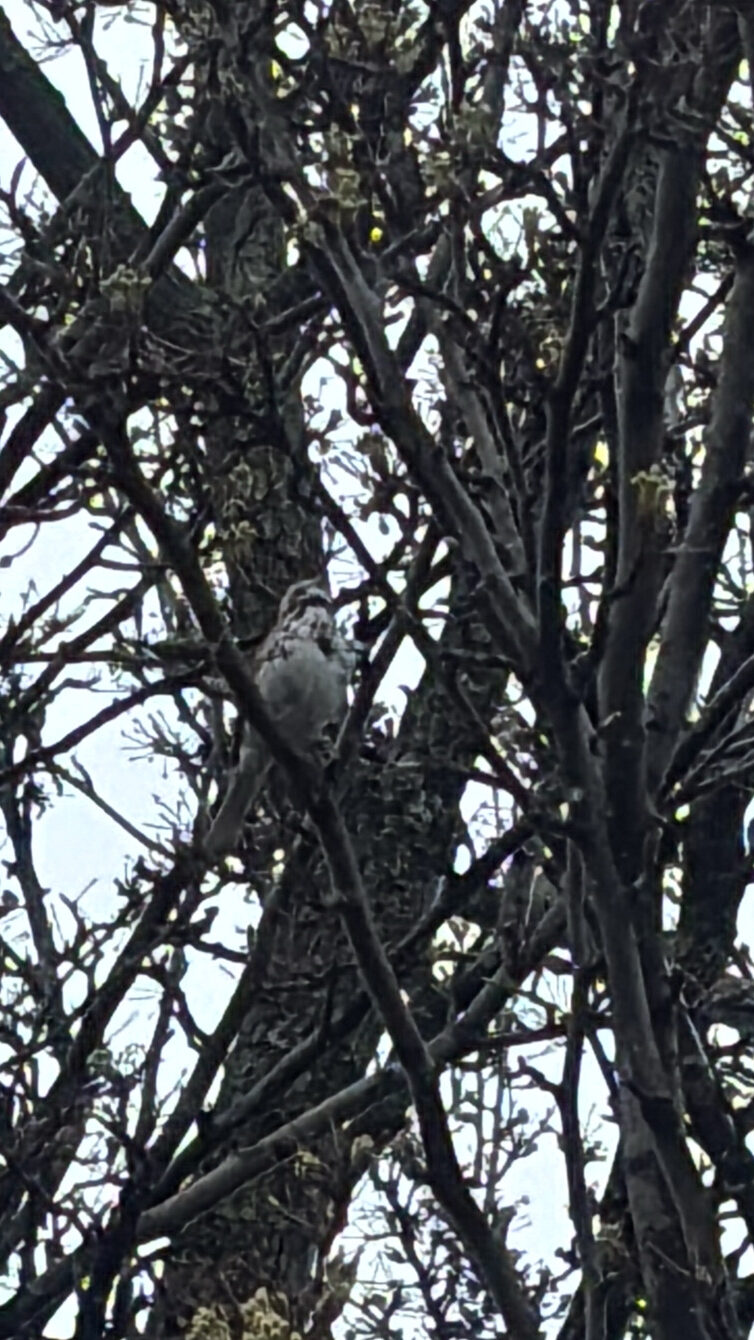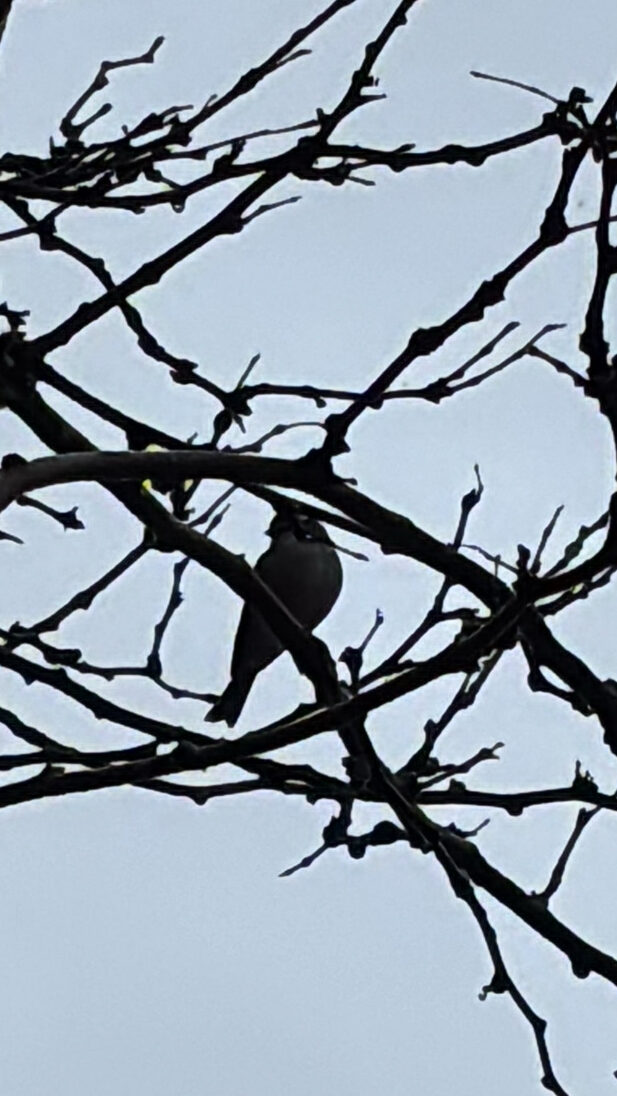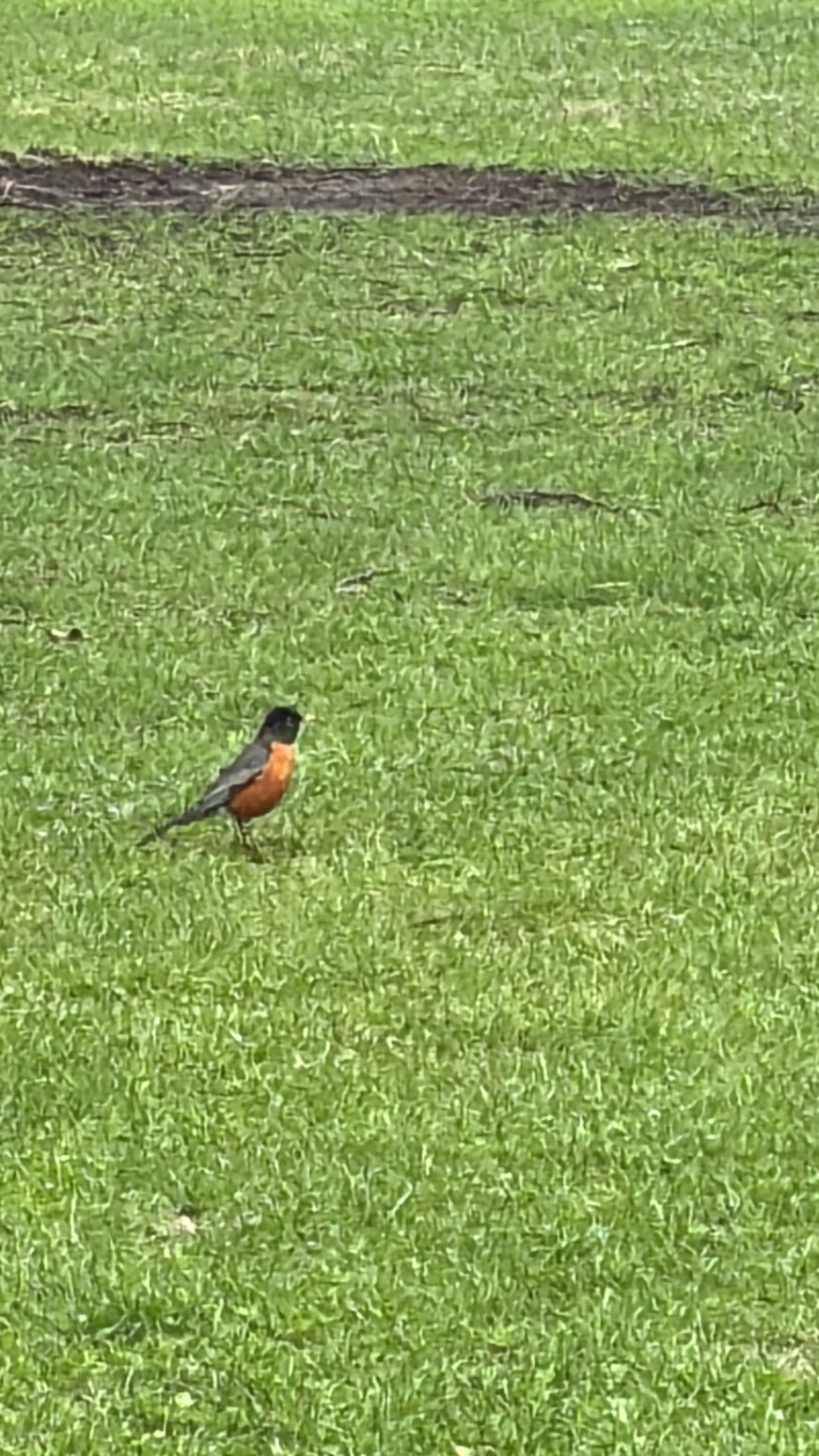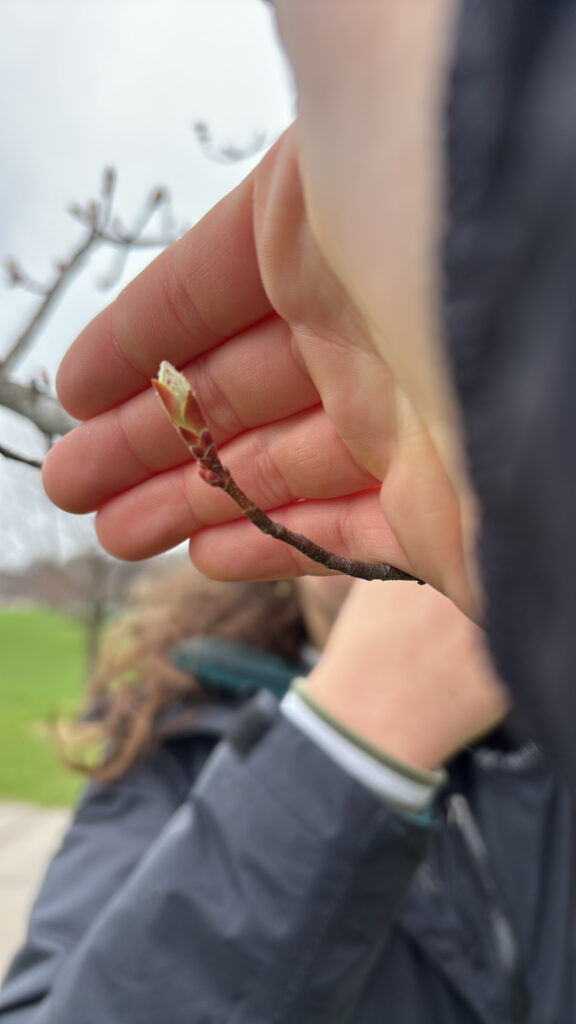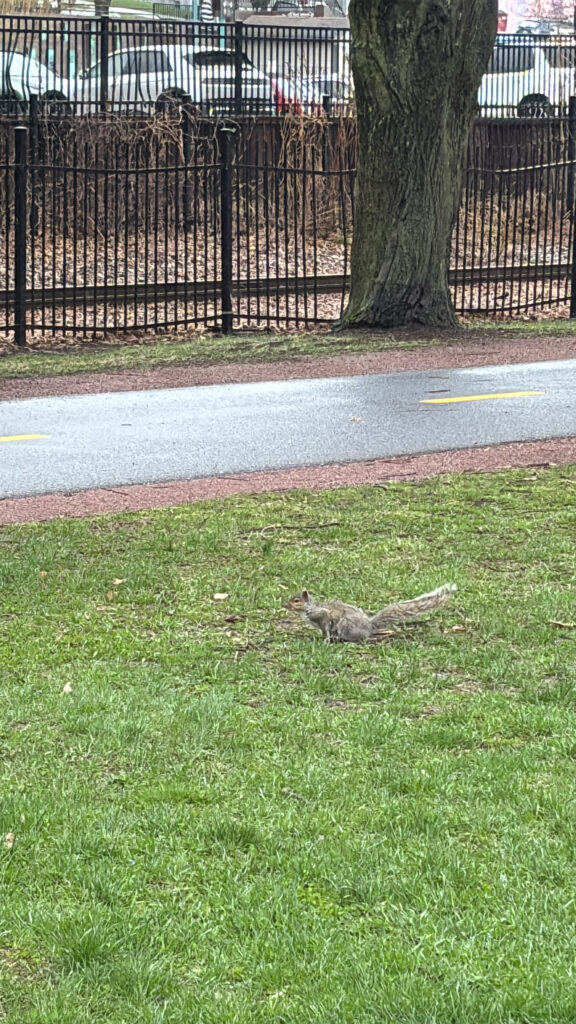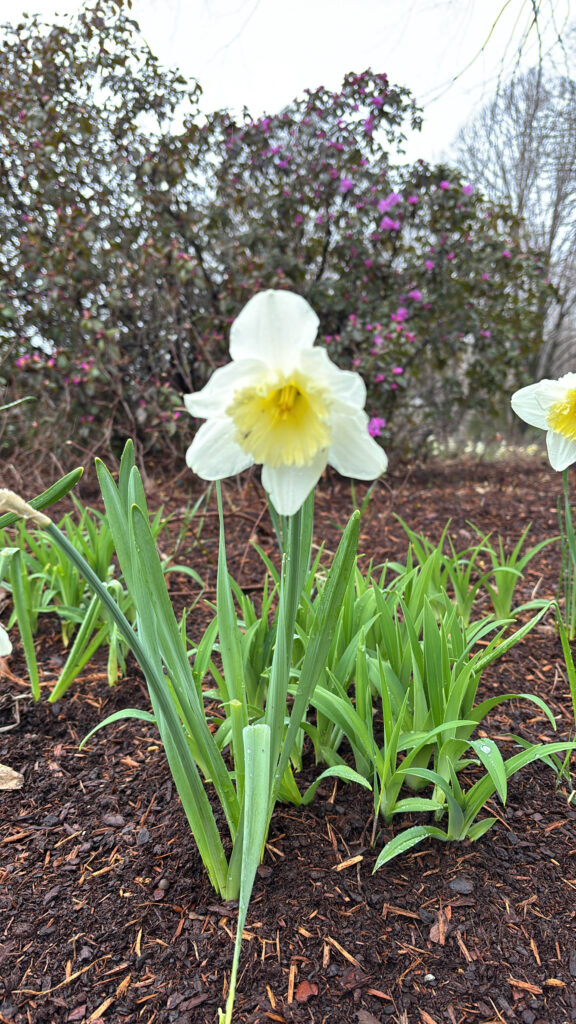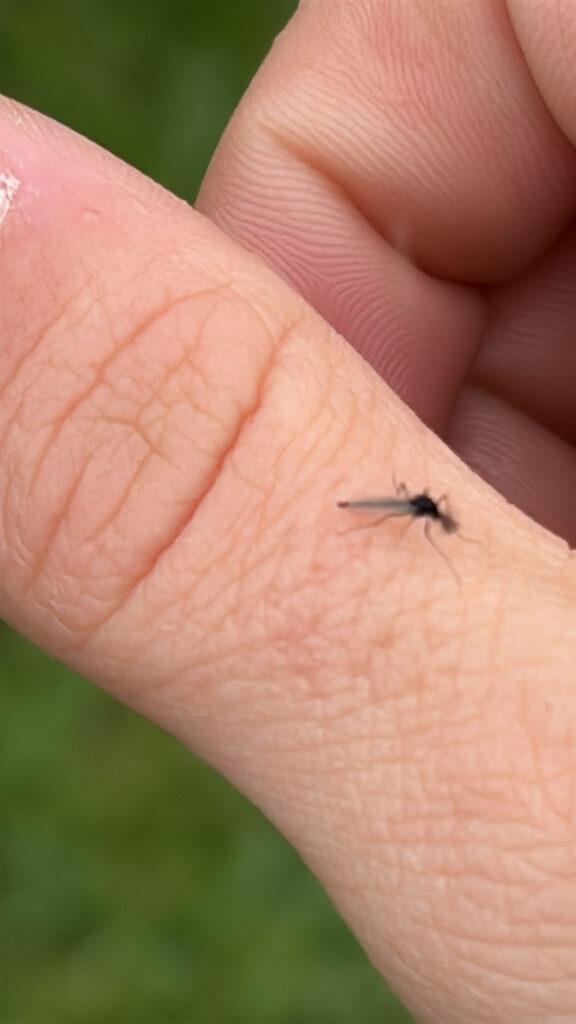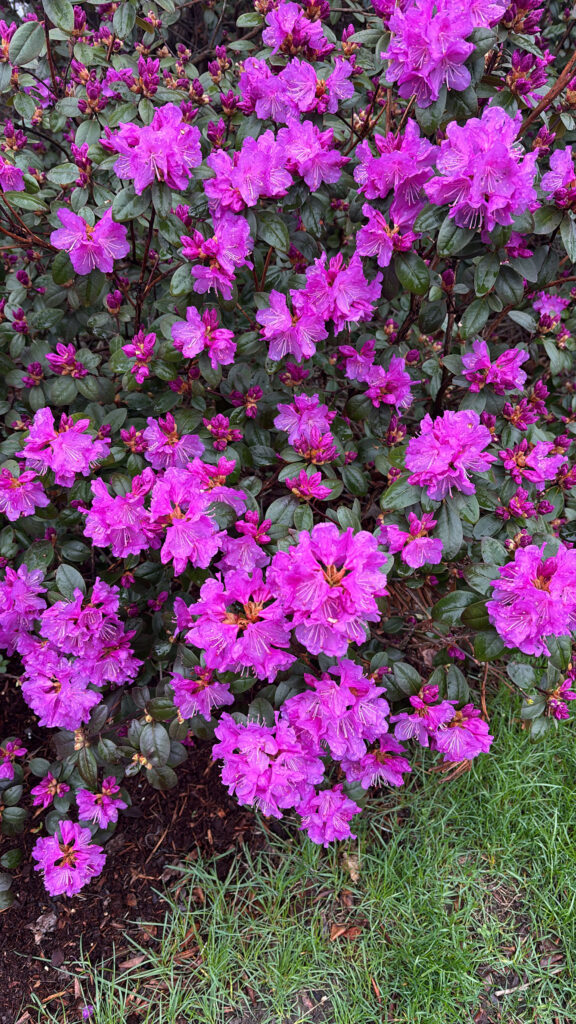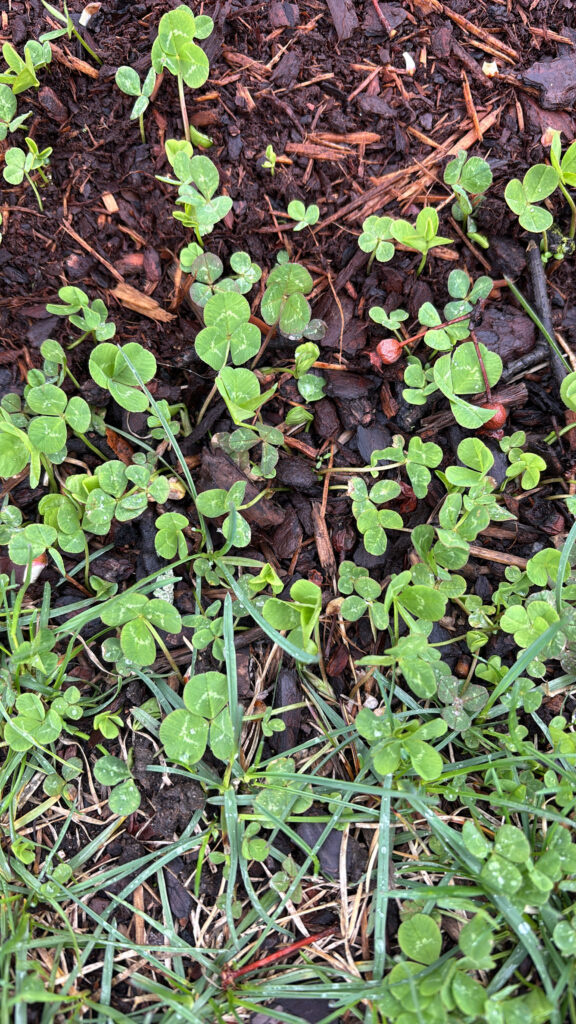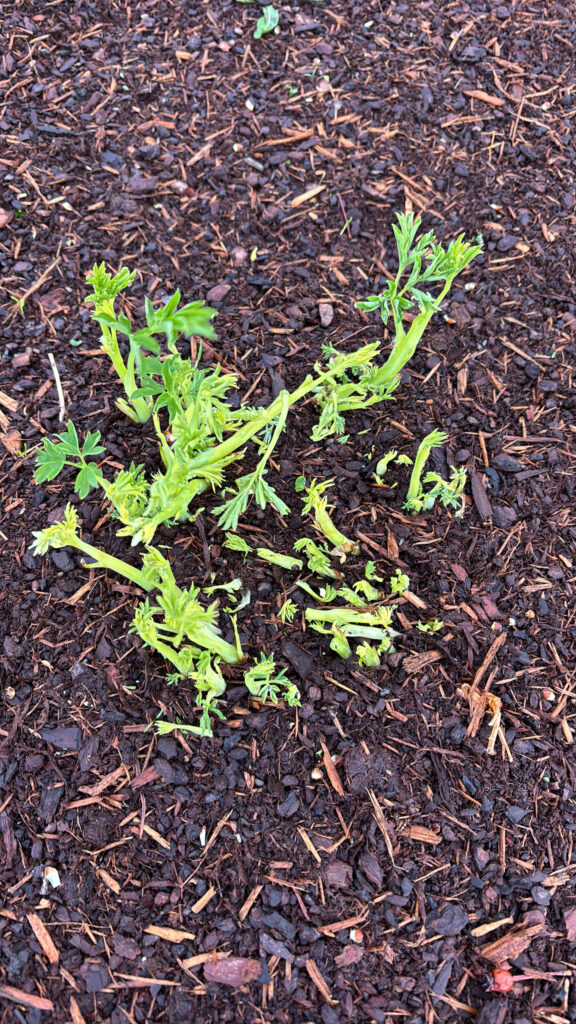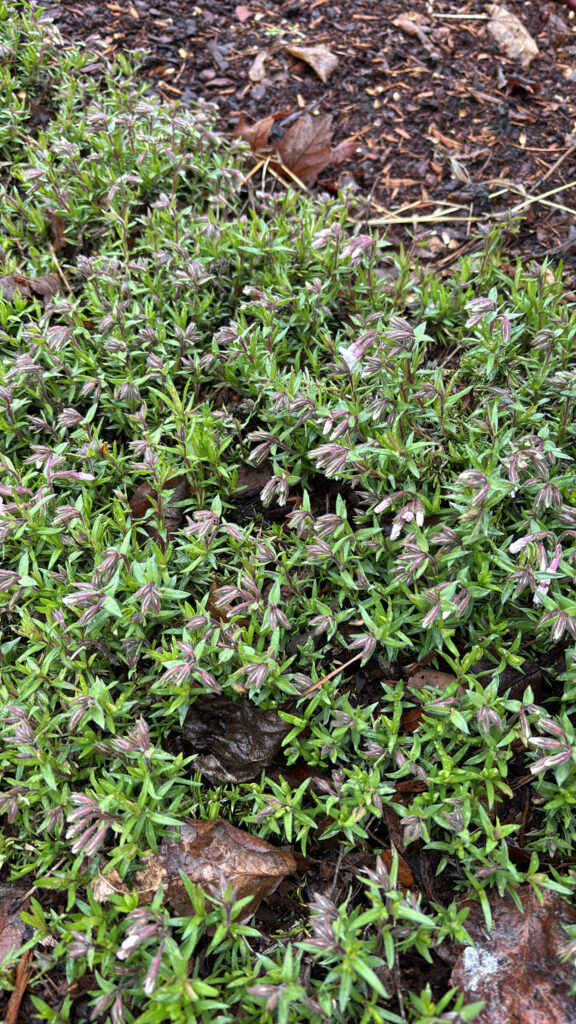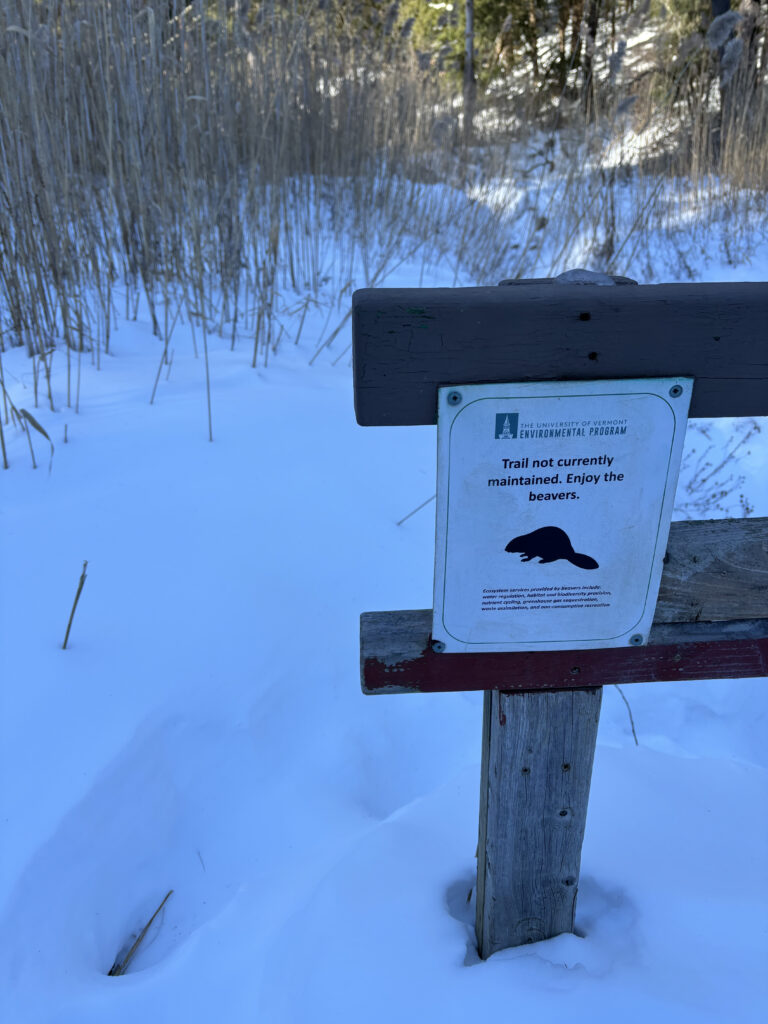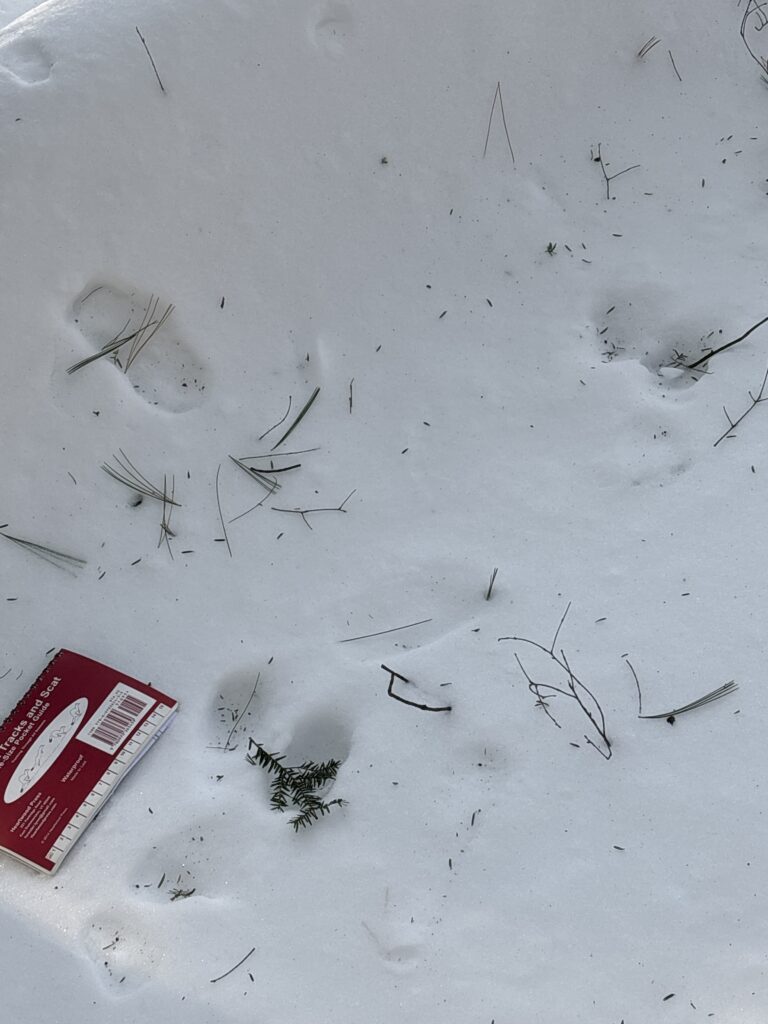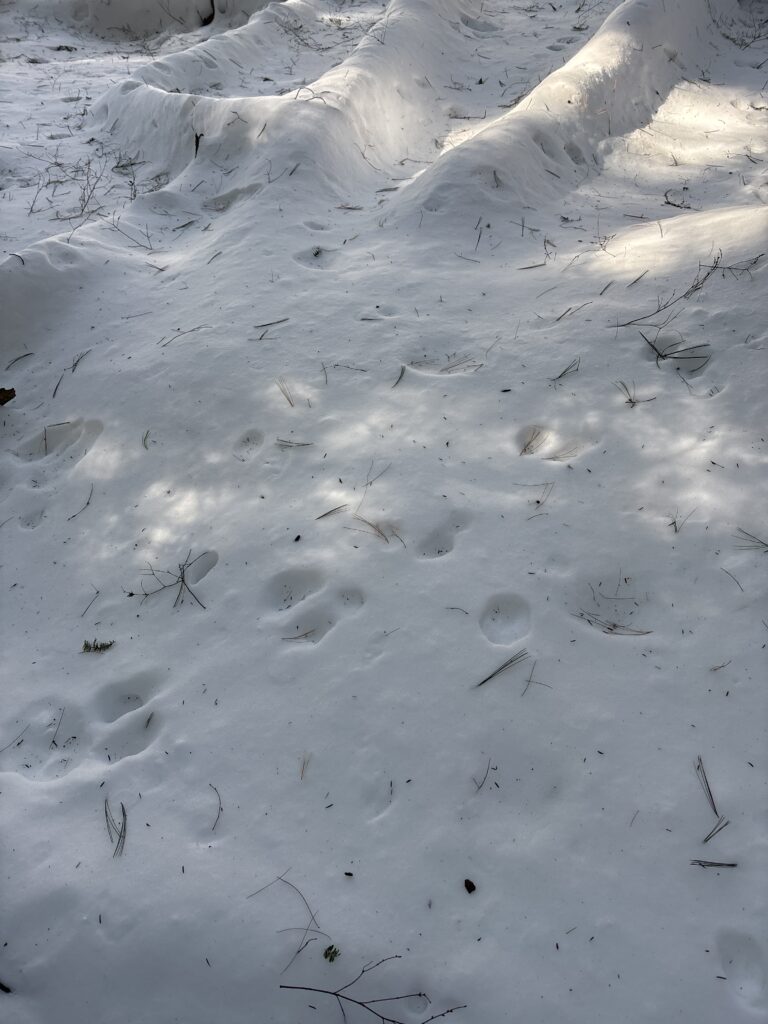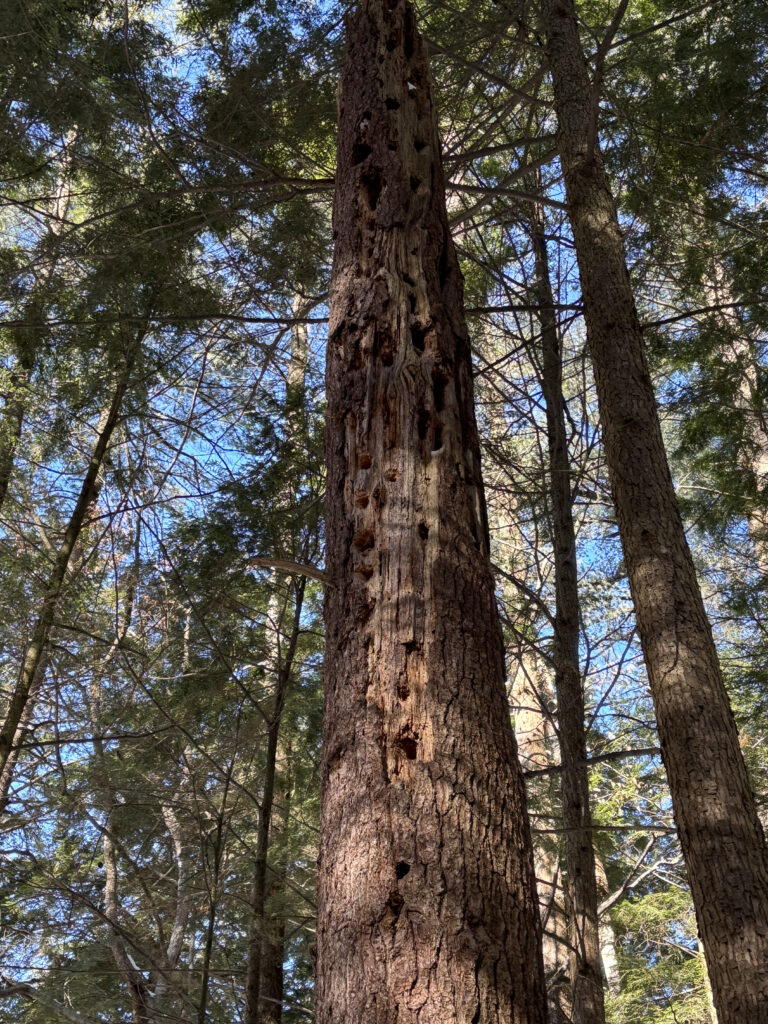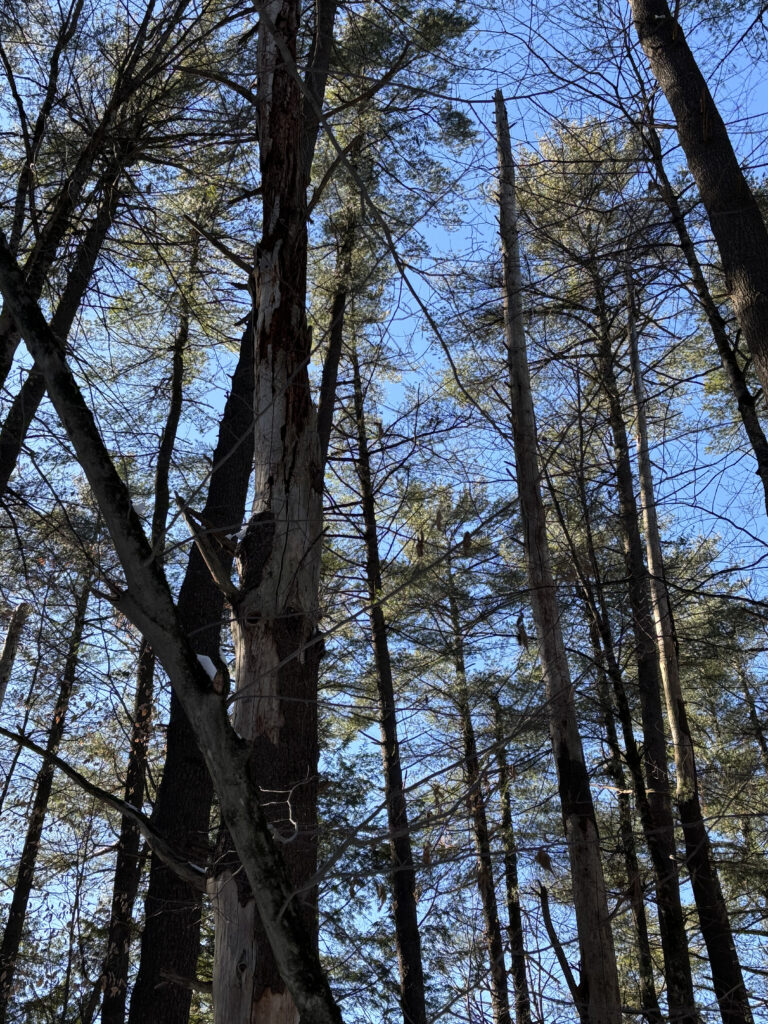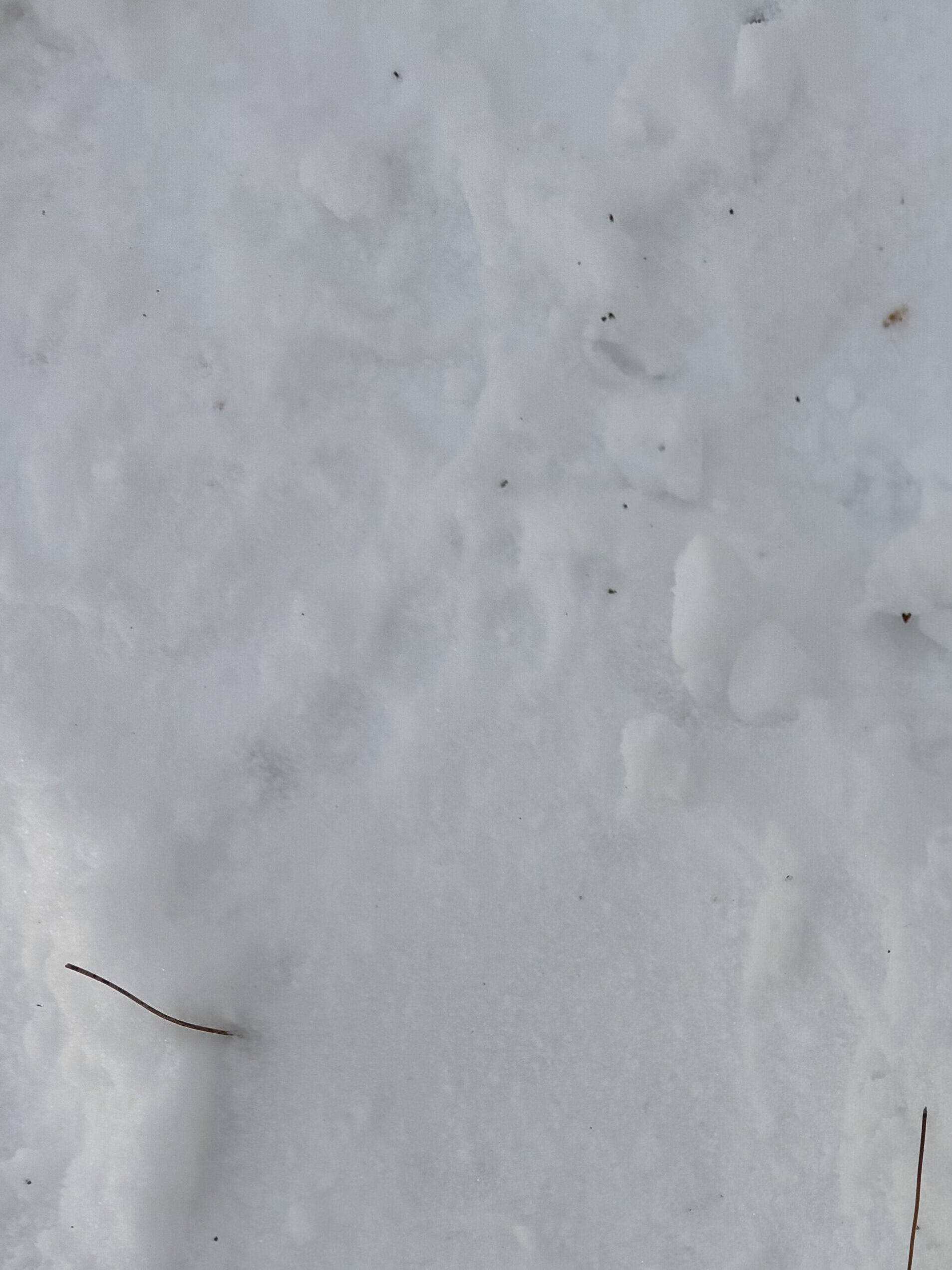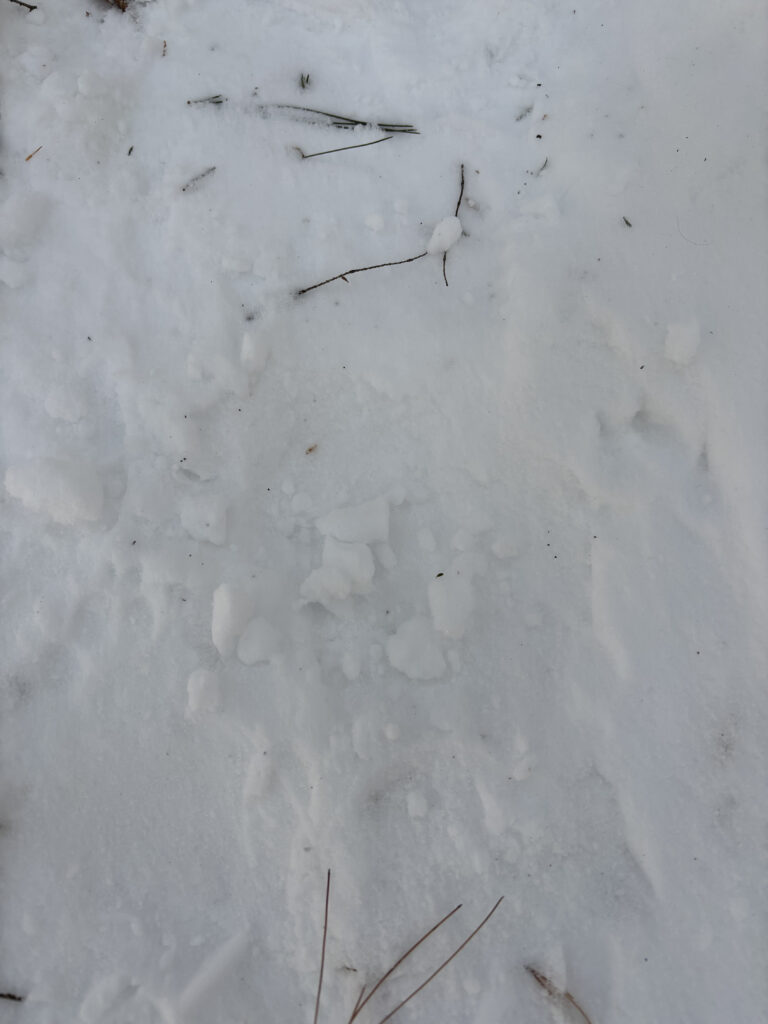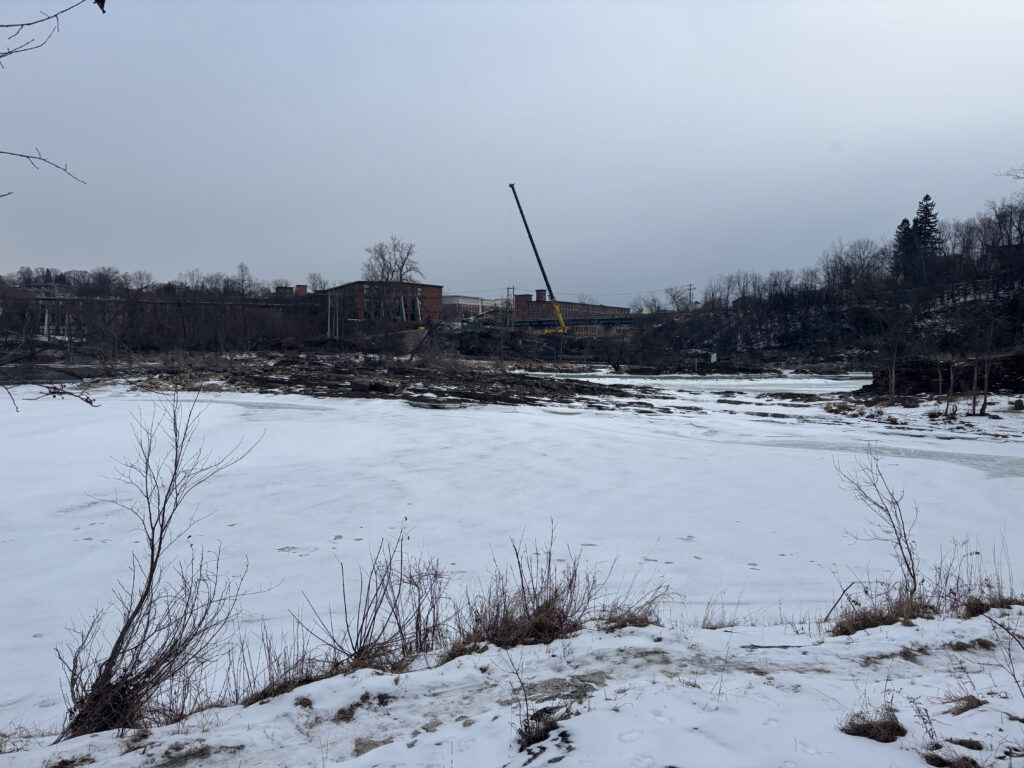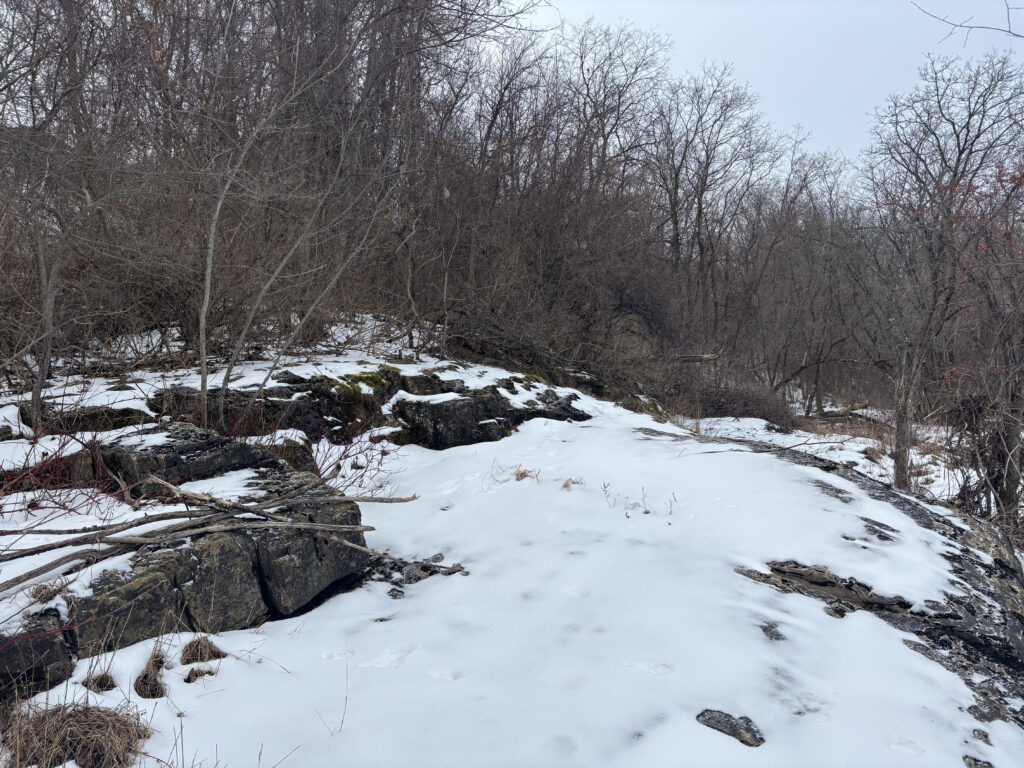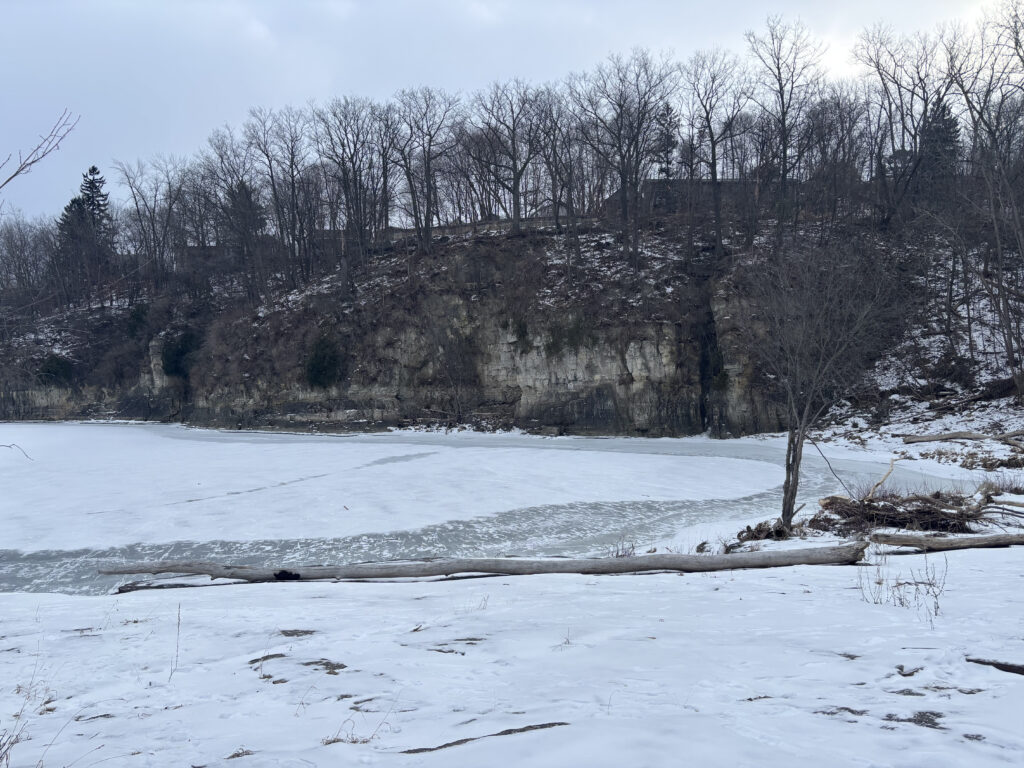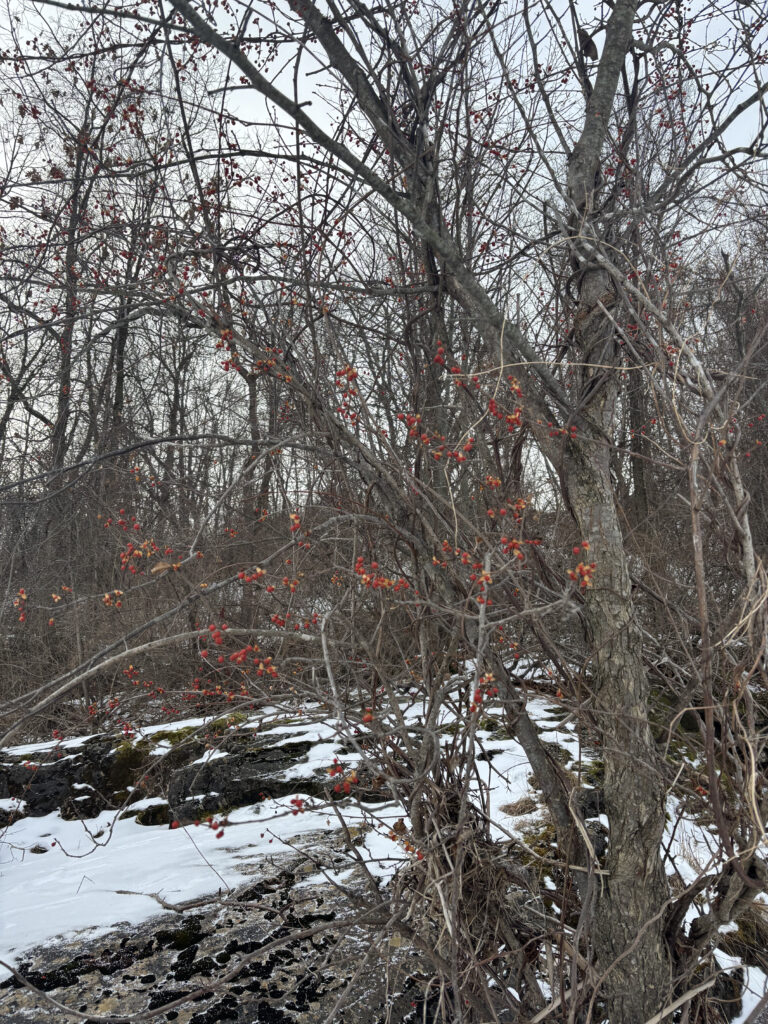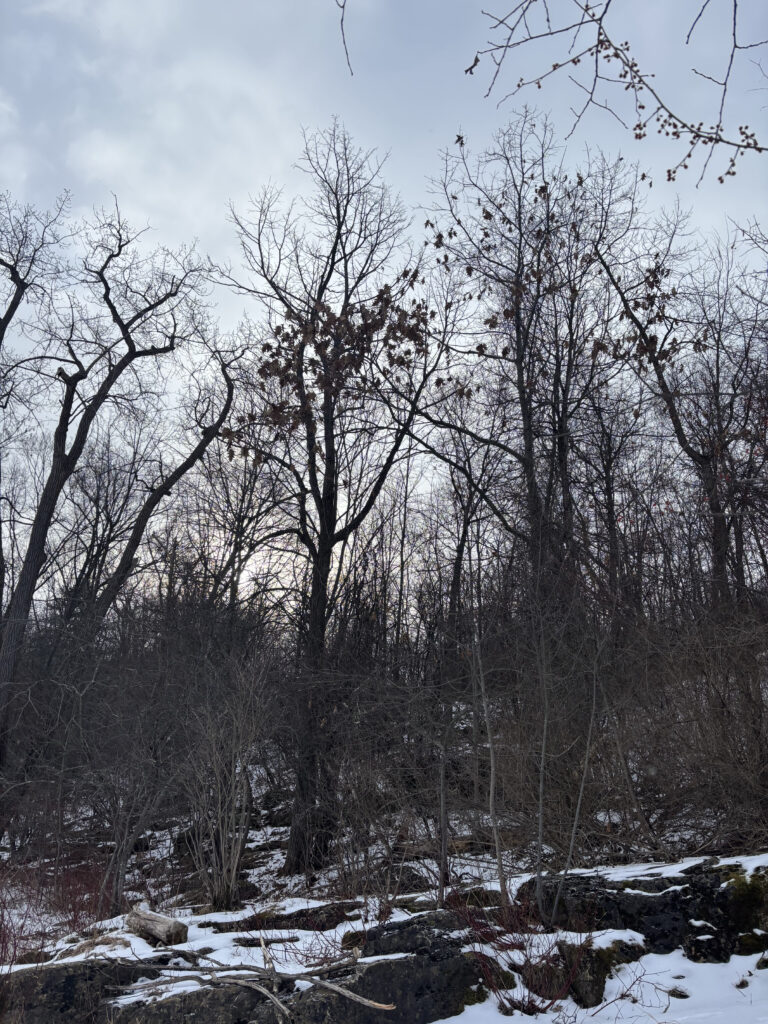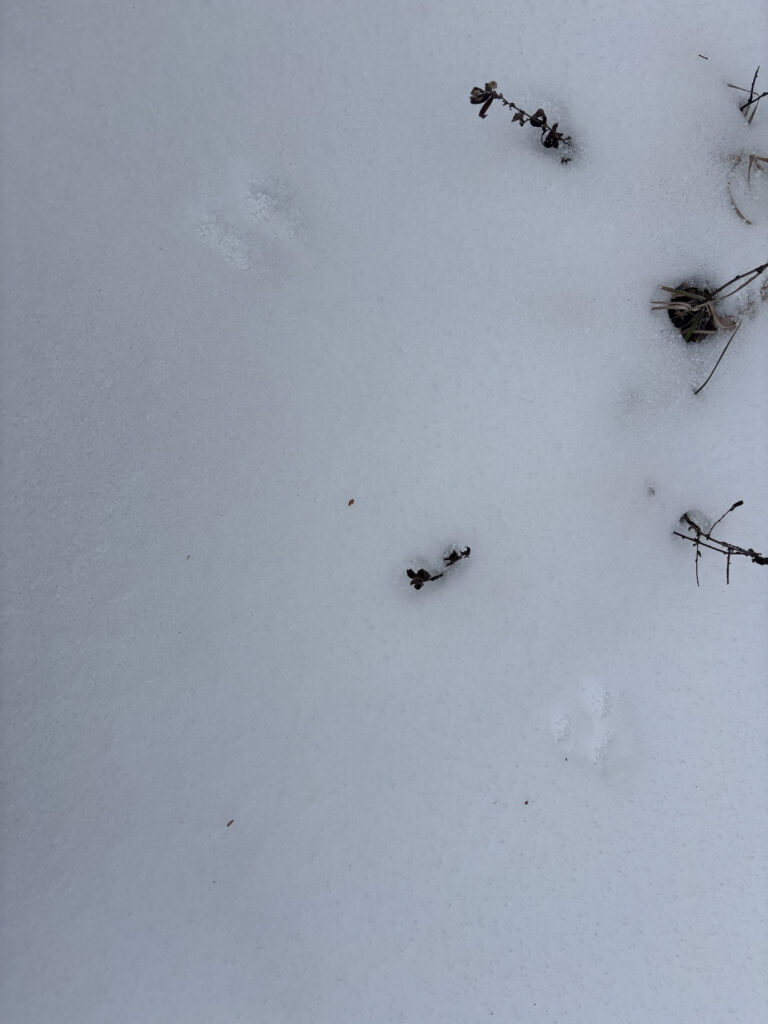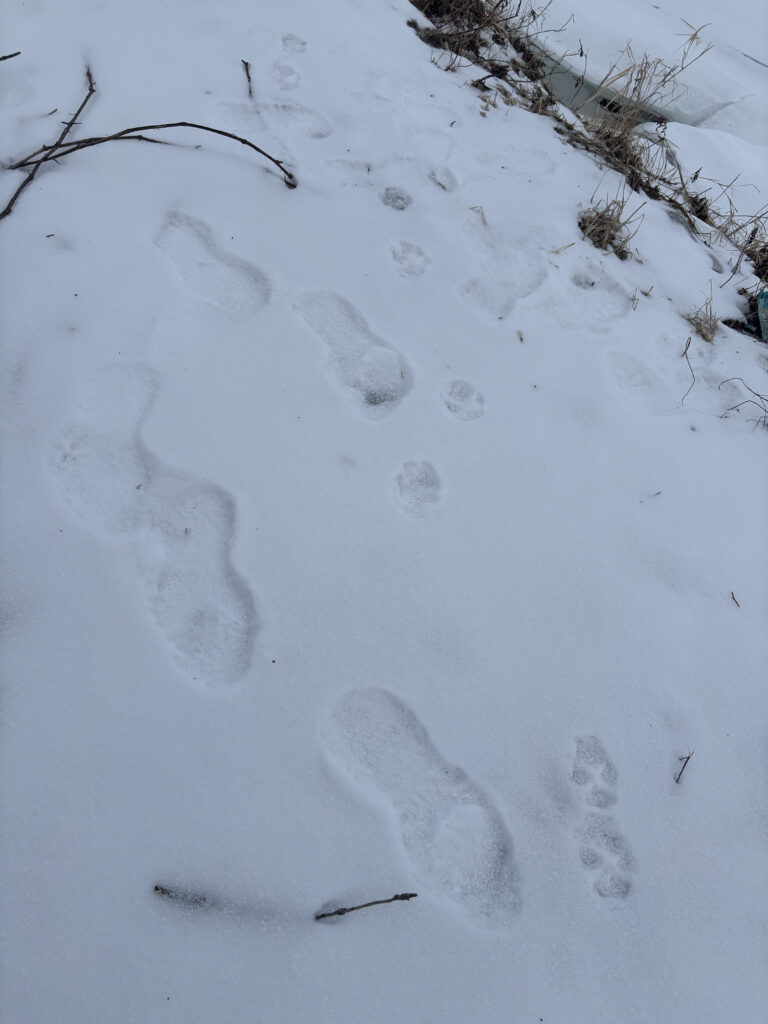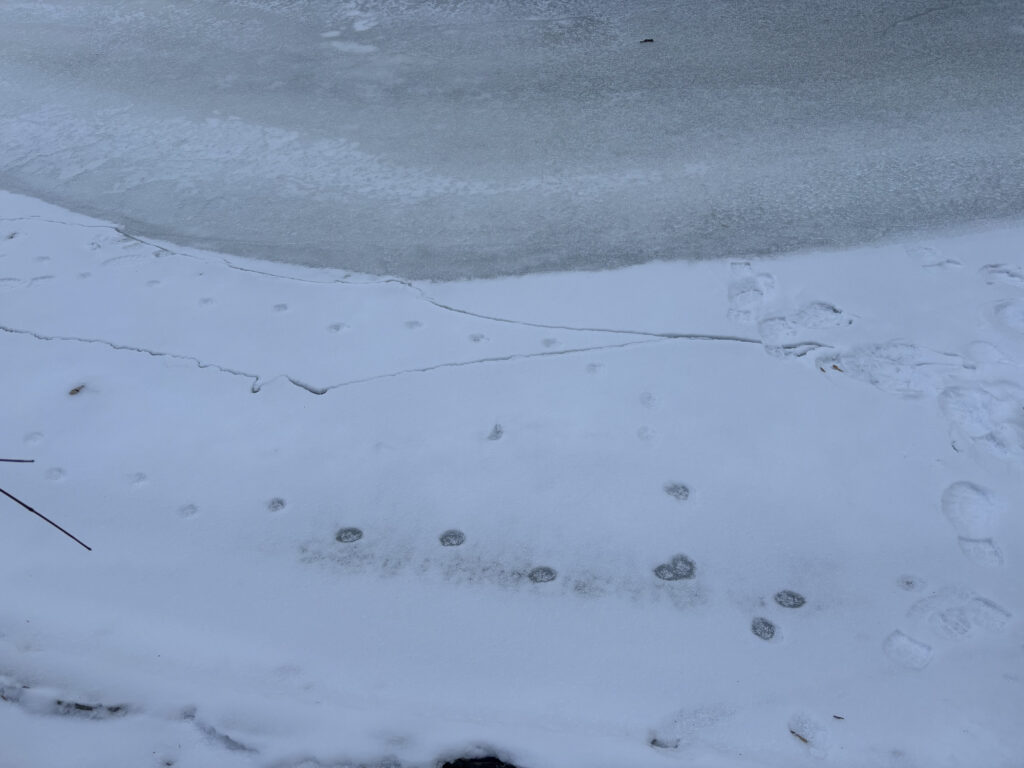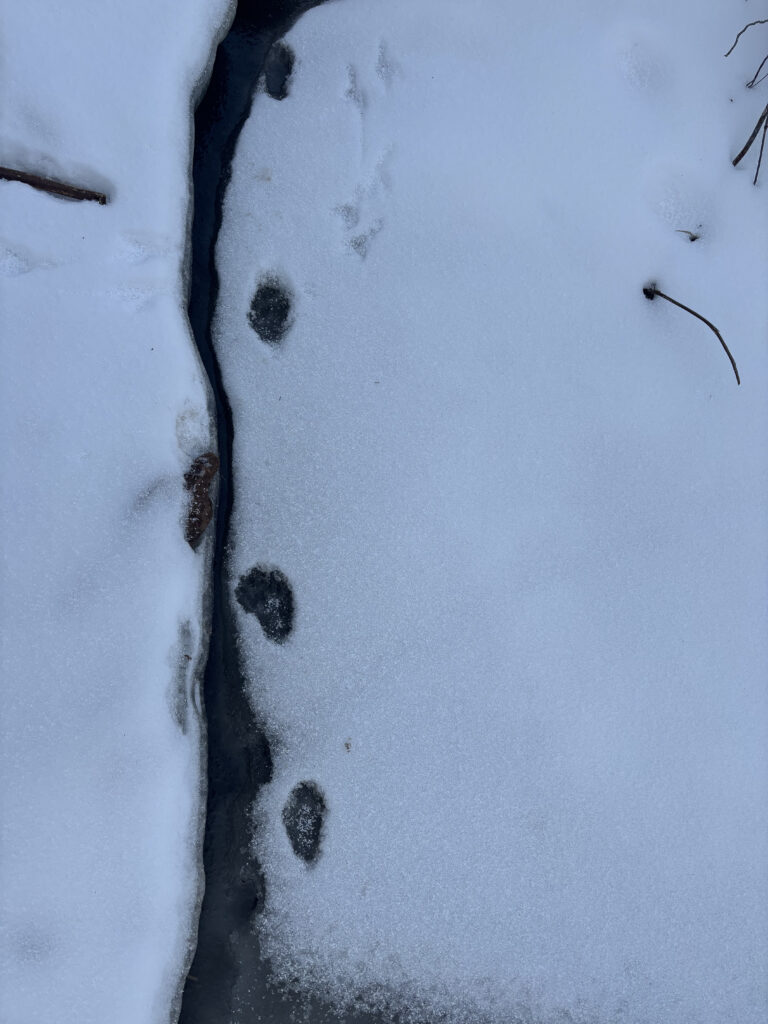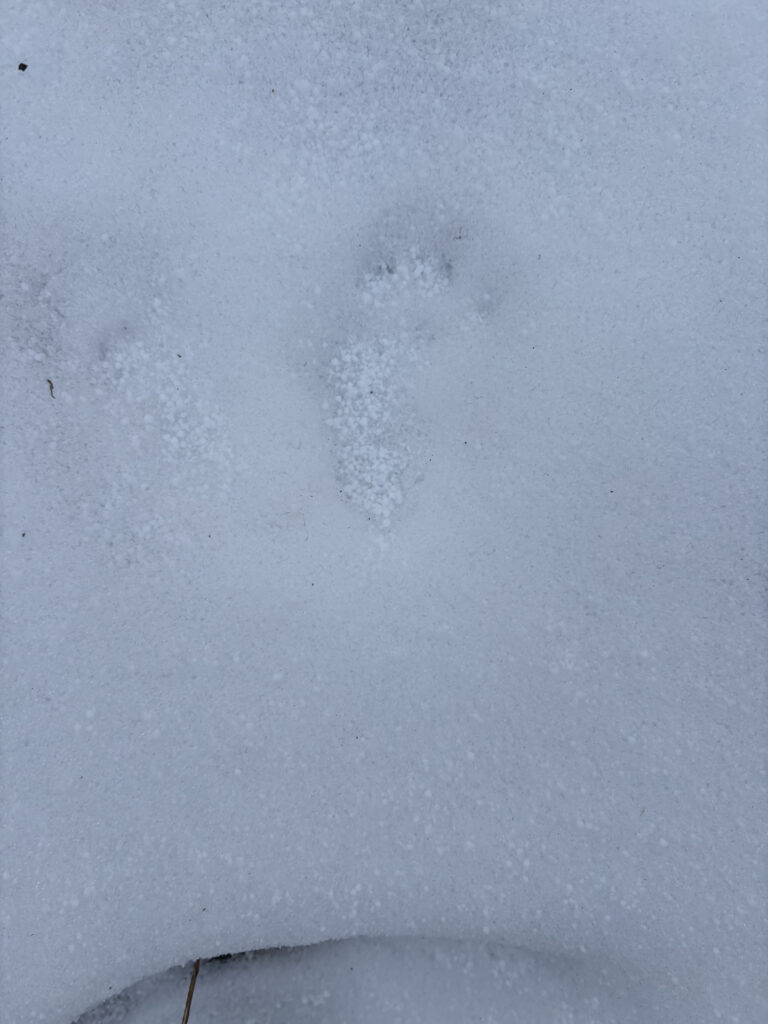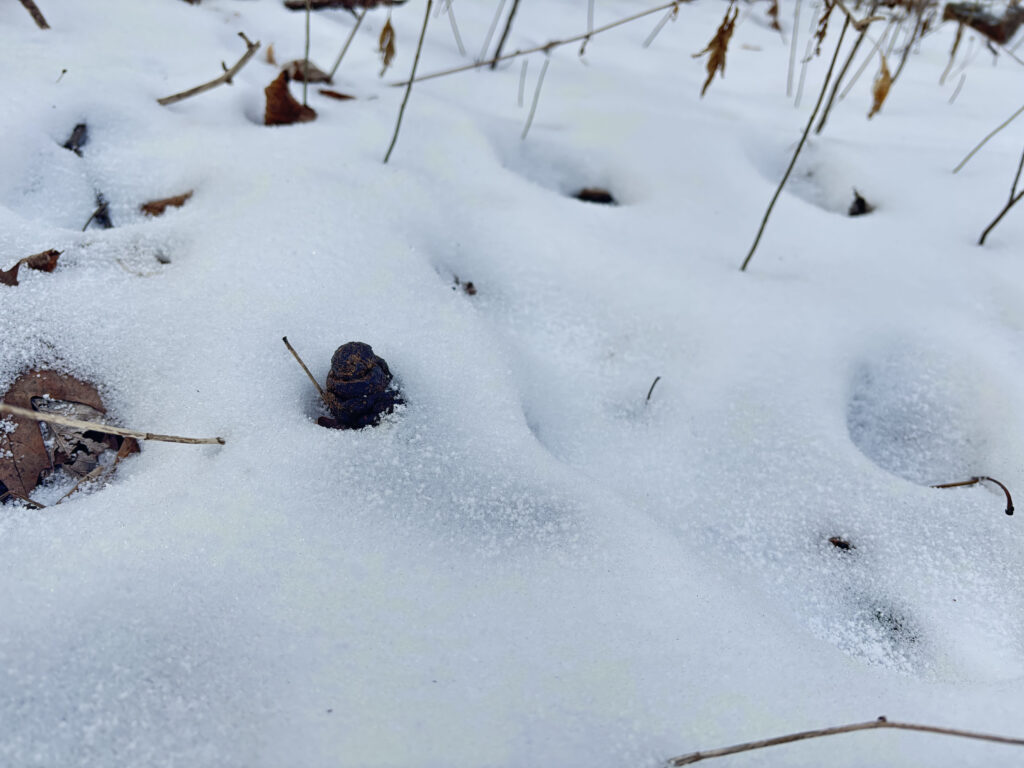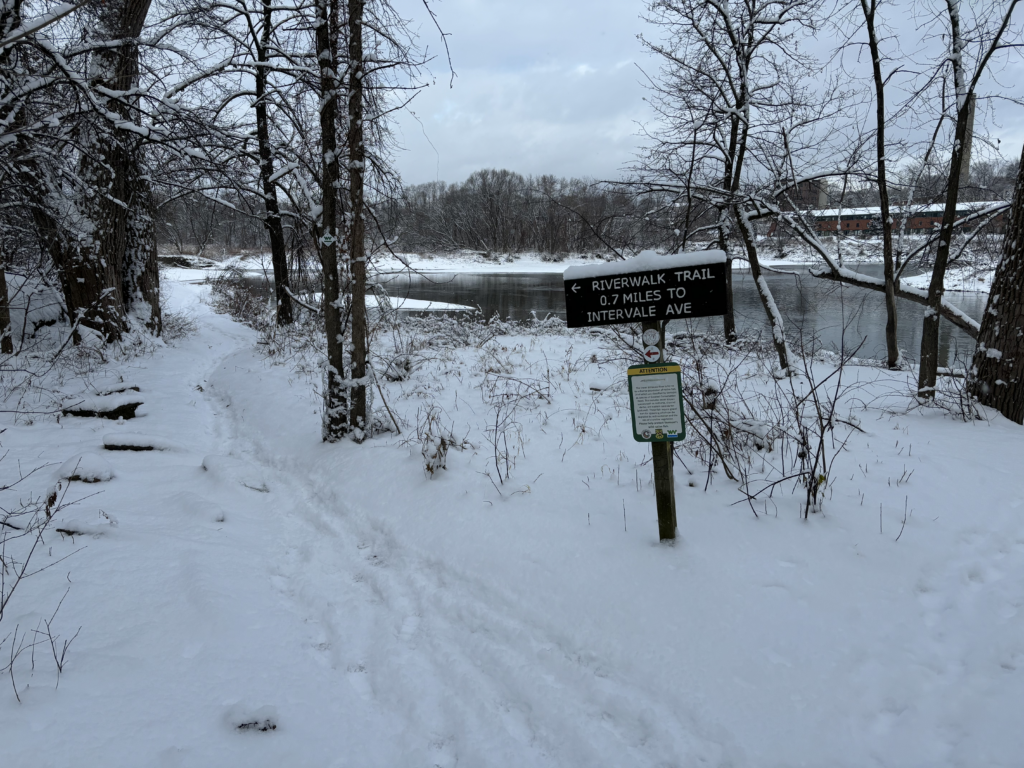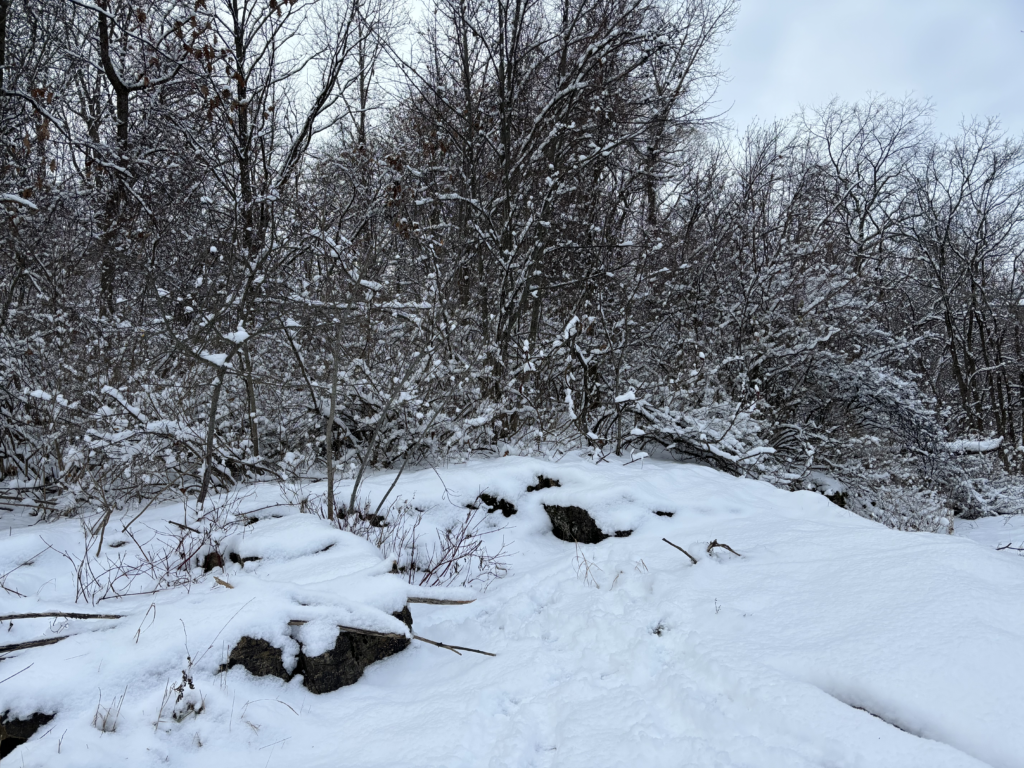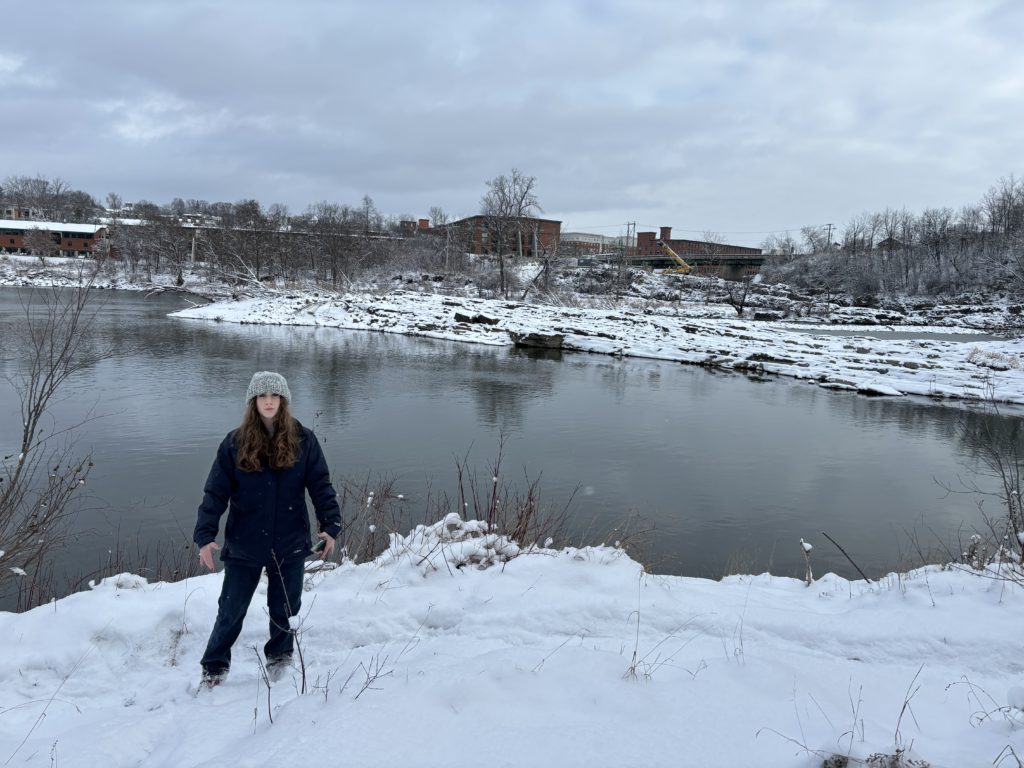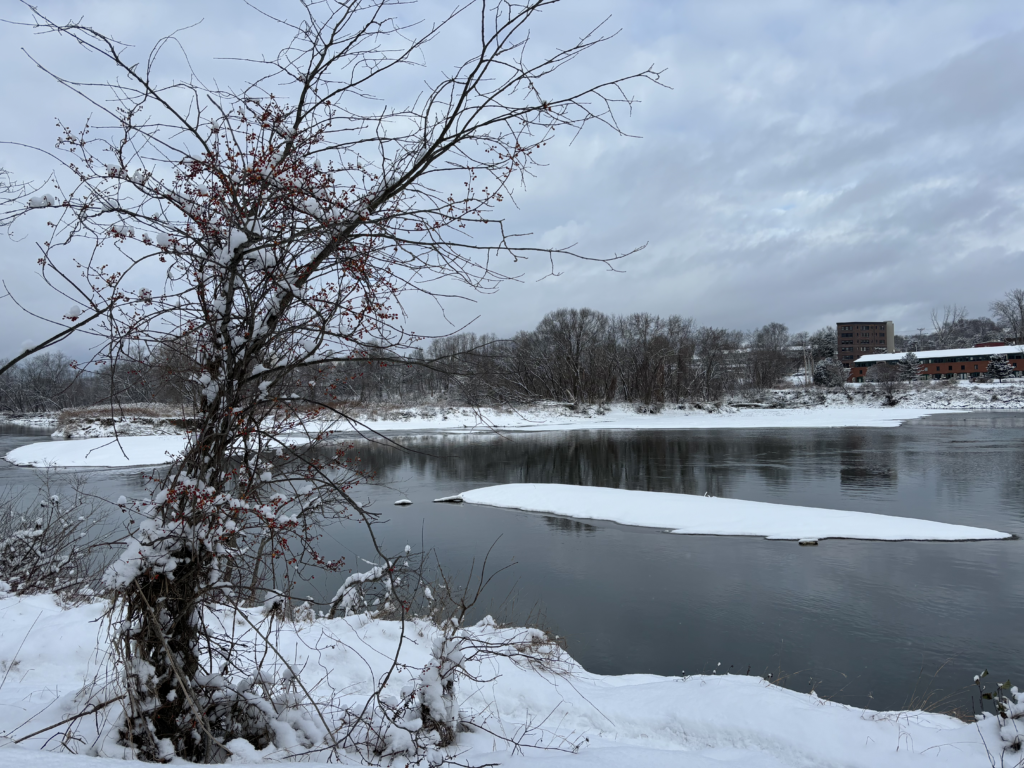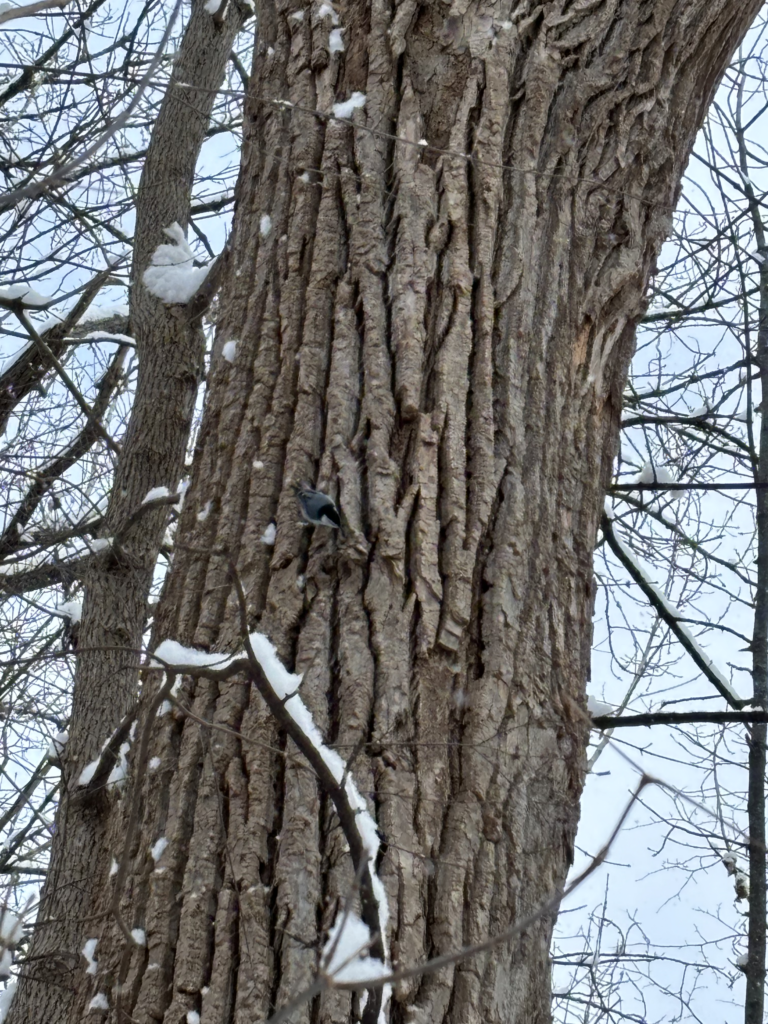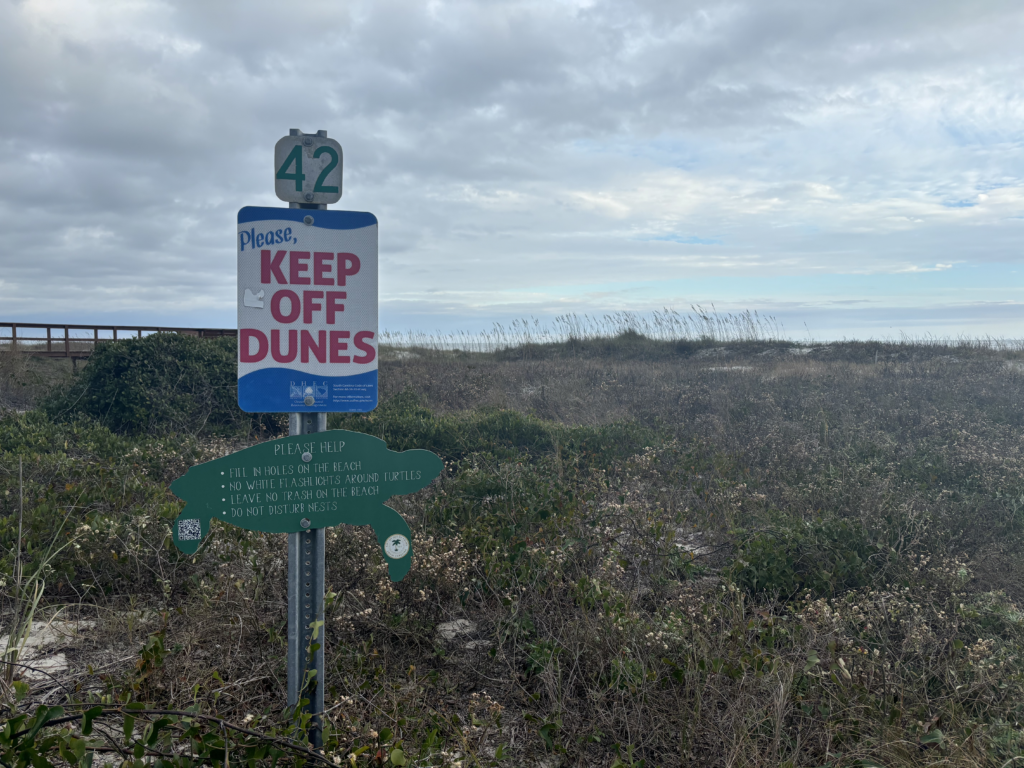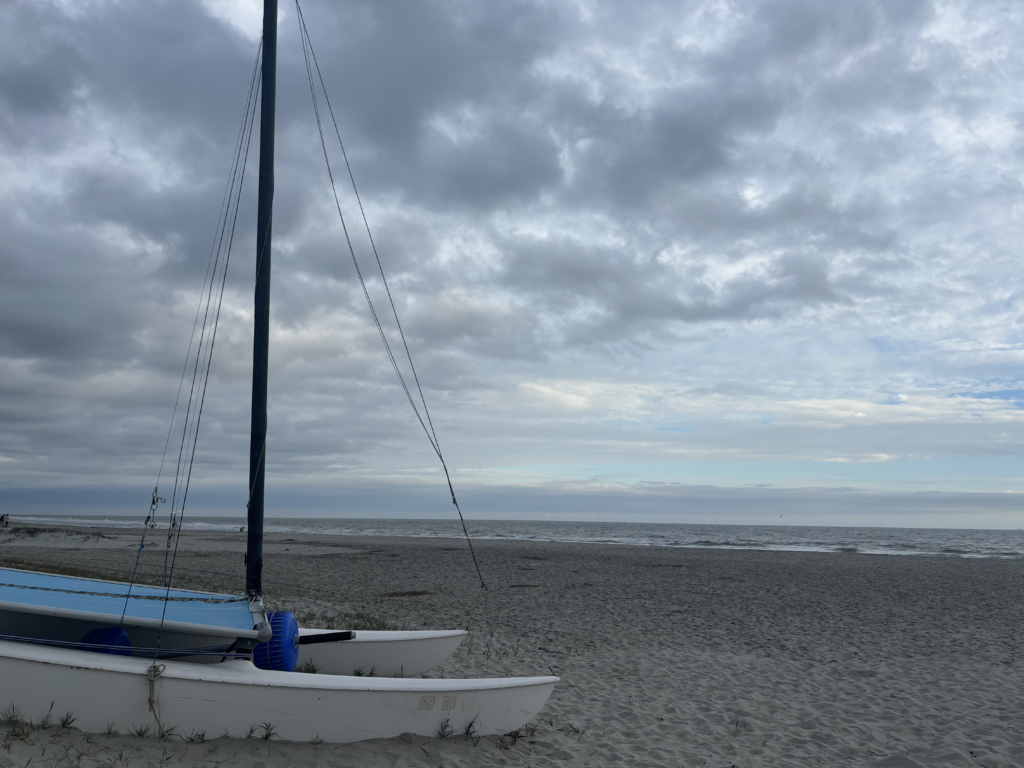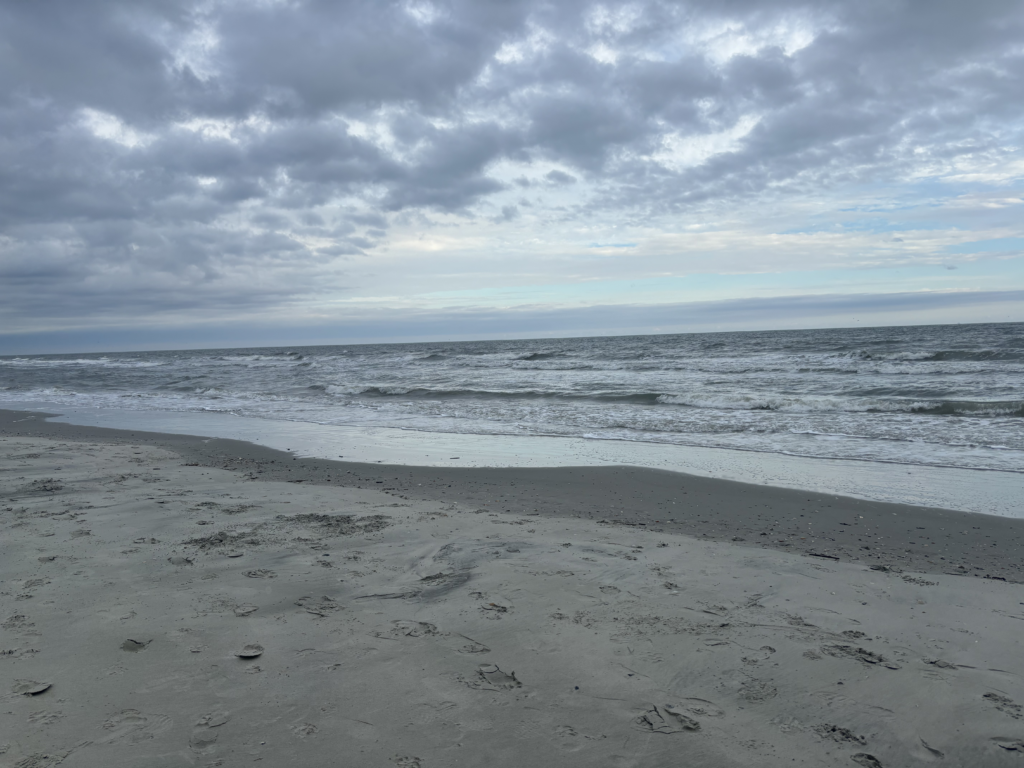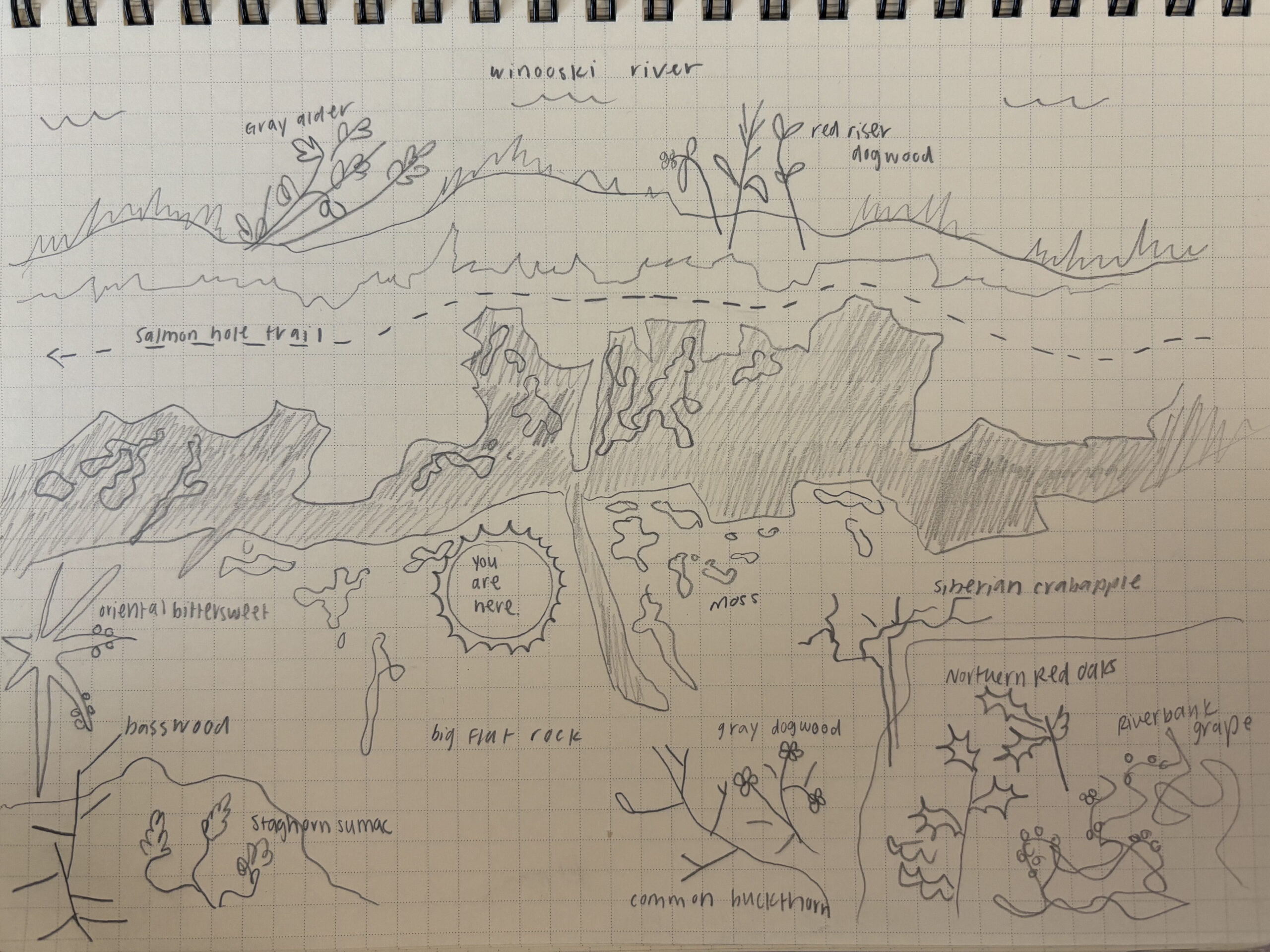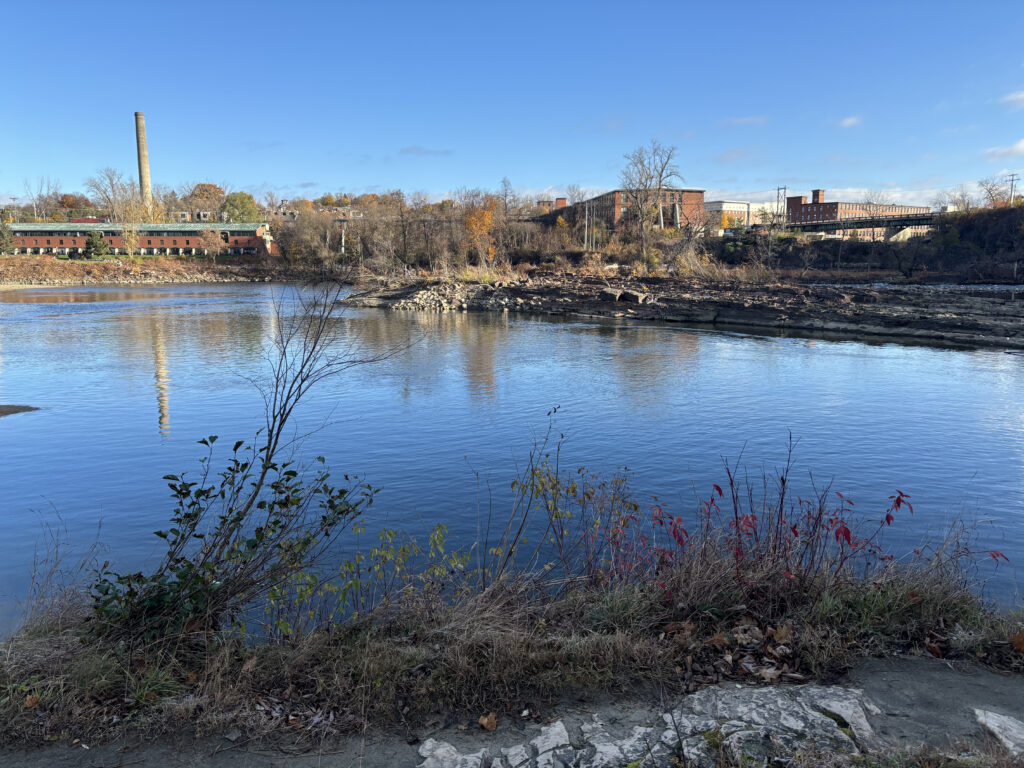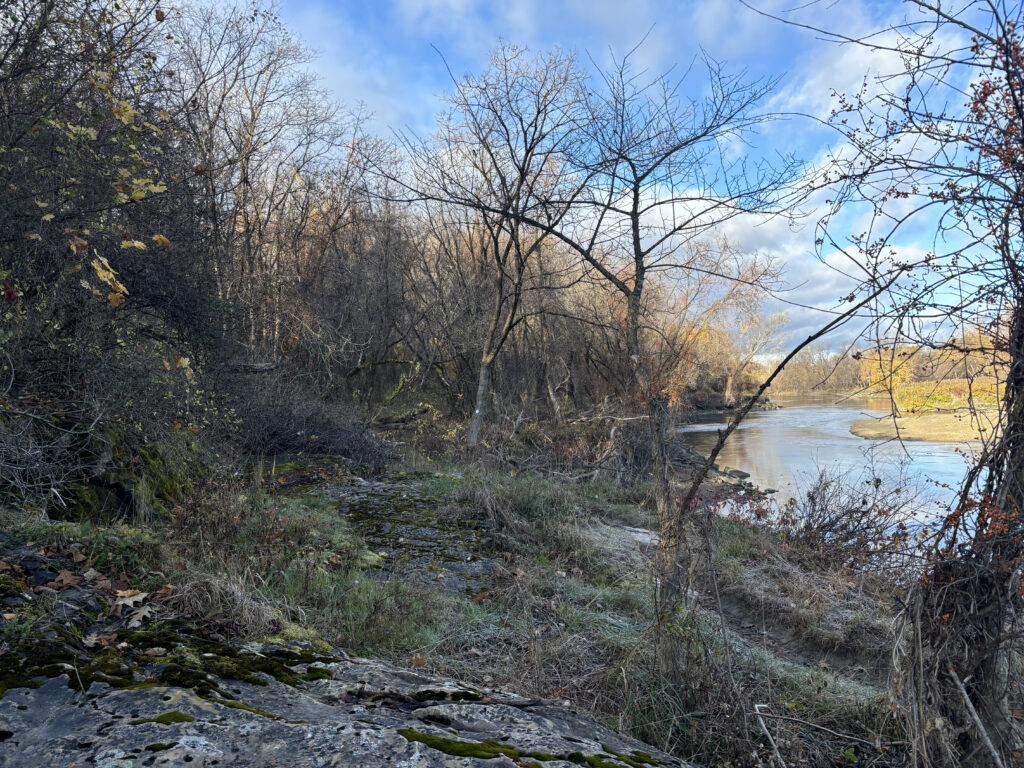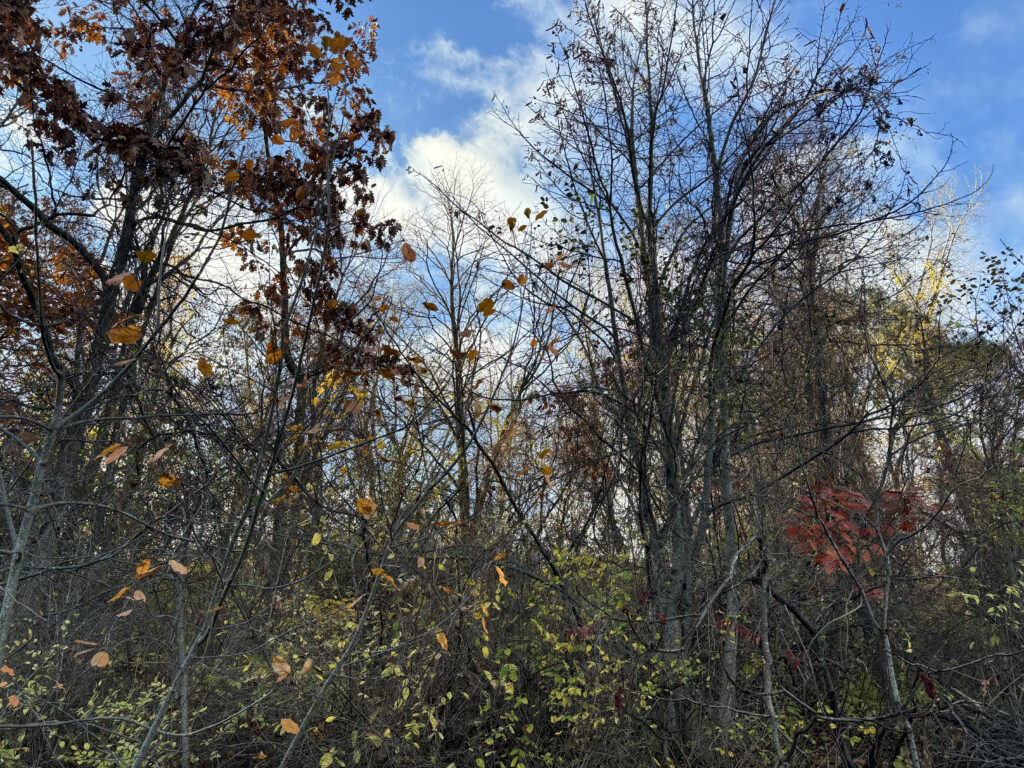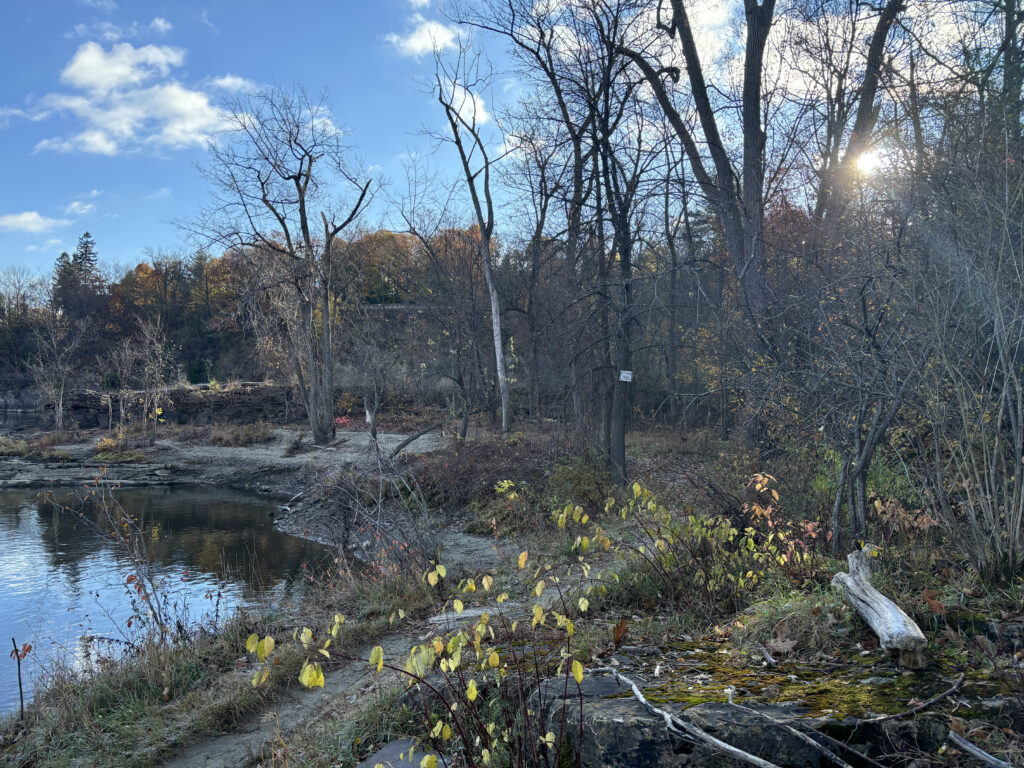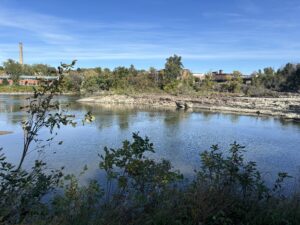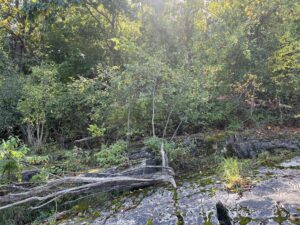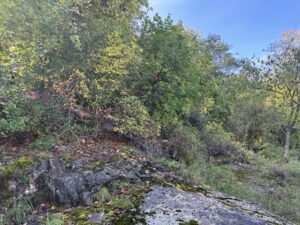Friday May 2 10:30 a.m
First, my friends and I had to make a pit stop to pick up our friend Mia from her last class of the first semester. I first traveled to Salmon Hole with Mia, and it only made sense that she came along for my last visit. The walk there was one I hadn’t taken in a long time, yet it was not hard to remember the turns and sights that I was all too familiar with last semester. Falling back into the routine of last semester never felt so easy. It was so nice to be back outside again; the world feels so full of life. Even on the way there, it felt like so many people were out and about. We even ran into a friend who was also biking his way to Salmon Hole. I missed this.
What has changed?
The scene of white and brown has been traded for a bright spring green. The water of the Winooski once again flows by, no longer stalled under a sheet of ice. Cinnamon ferns are springing up and unfurling under the spring sky, and the crabapples’ leaves are opening up. I hear a chorus of birds as I get to my site: Northern Cardinal, Singing Sparrow, American goldfinch, Downy Woodpeckers, and the loud ring-billed gull. I see the marker for the trailhead and I know I’m getting close. I turn the corner at the start of the trail, and I see my site’s defining feature, the large slanted rock. No longer covered in snow, moss, and other herbaceous plants have begun sprouting from the cracks. The backdrop of woods is starting to show hints of green and life. From my site, looking out onto the lake, I can see Canadian Geese on the island in the water. They mate for life.
How do I fit in here?
Salmon Hole gets its iconic name from the rich indigenous and colonial history of fishing at this site. While extensive restoration efforts are trying to help the dwindling population of Atlantic Salmon, the site reminds us of the dependence people have on their environment. Now that we have depleted the resources, it also reminds us that how the Earth gave to us we should give back to them. I feel a deep appreciation for this place and the life that it does hold. The people and dog prints I constantly see make me hope that others feel the same as I do. I hope others want to preserve this little trail and give it the respect it has showed us. While it has been a while since I had been back, I felt like I was still a part of this little trail. The blooming Lesser Celandine filled the gaps in resprouting vegetation and just reminds me that life will be ok.
15 minute sit sketch of my site

